Dry Eyes Specialist in Katy, TX
Categories
- Monday: 9:00 AM - 5:00 PM
- Tuesday: 10:00 AM - 6:00 PM
- Wednesday: 9:00 AM - 5:00 PM
- Thursday: 9:00 AM - 5:00 PM
- Friday: 9:00 AM - 5:00 PM
- Saturday: Closed
- Sunday: Closed
Your Dry Eye Treatment Starts Here
If your eyes often feel dry, irritated, or uncomfortable, you may be experiencing dry eye disease. This condition happens when your eyes don’t produce enough tears, or when tears evaporate too quickly. Left untreated, it can lead to blurred vision, discomfort, and even damage to the eye’s surface. At Vision Gallery in Katy, our dry eyes specialists use advanced diagnostic tools and cutting-edge treatments to identify the root cause of your dry eyes and provide lasting relief tailored to your needs.
What is Dry Eye Syndrome?
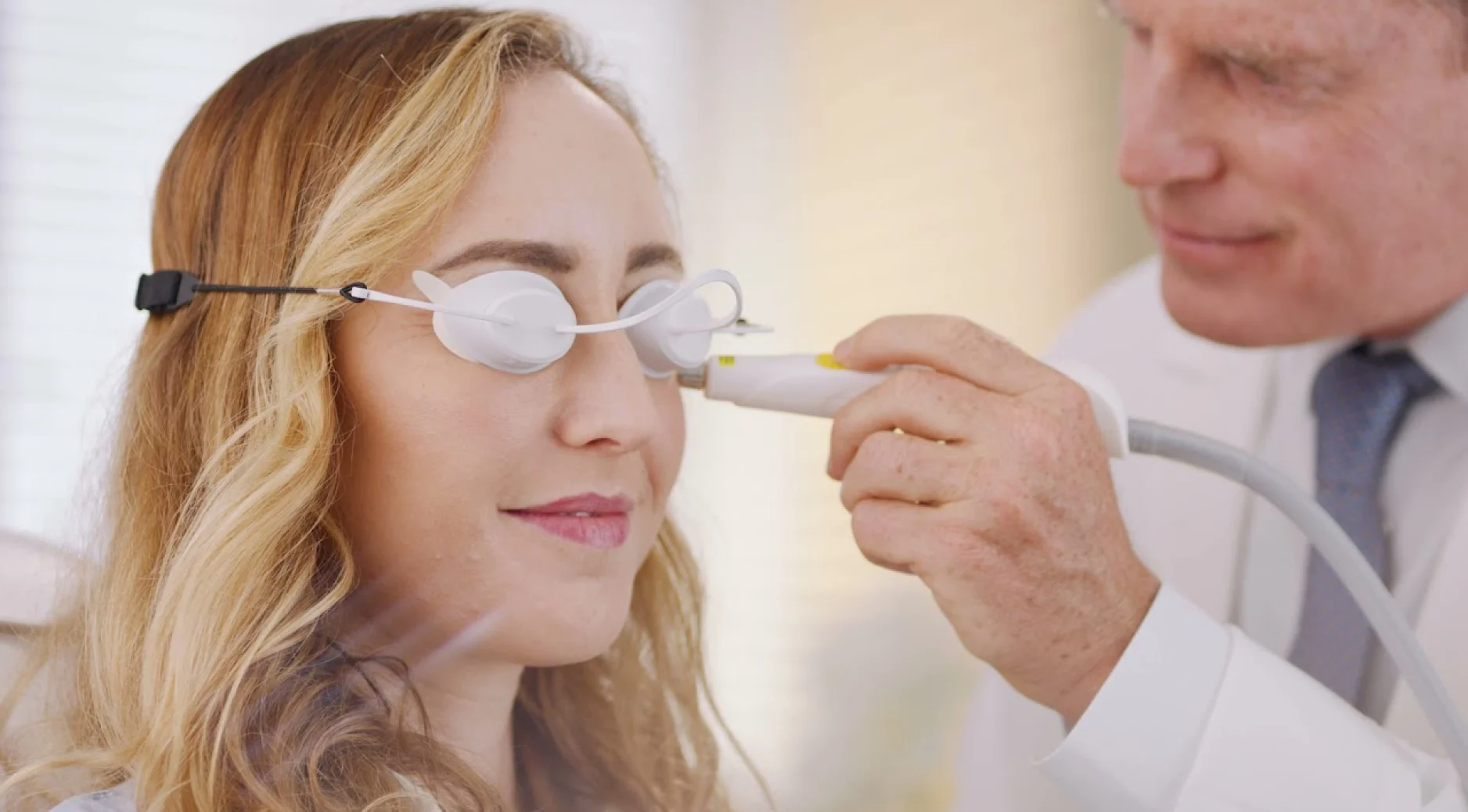
At Vision Gallery in Katy, we believe that effective dry eye treatment starts with understanding the science behind it. Your eyes are protected by a delicate tear film, which plays a vital role in keeping them healthy, clear, and comfortable. This tear film is made up of three important layers—each with a specific function. When one or more of these layers is disrupted, the tear film becomes unstable, resulting in the common symptoms of dry eye disease, such as irritation, burning, redness, and fluctuating vision.
The Three Layers of the Tear Film
- Fatty Oils (Lipid Layer)
Produced by the meibomian glands, this outer layer prevents your tears from evaporating too quickly and keeps them stable.
- Aqueous Fluid (Water Layer)
Created by the lacrimal glands, this middle layer hydrates and nourishes the eyes, washes away debris, and provides a smooth surface for sharp, clear vision.
- Mucus (Mucin Layer)
Produced by goblet cells, this inner layer spreads the watery component evenly across the surface of the eye, ensuring the tears stick properly instead of beading up.
Symptoms of Dry Eyes
You may be experiencing dry eye syndrome if you notice:
- Burning, stinging, or scratchy sensations
- Redness or irritation
- Sensitivity to light
- Blurry or fluctuating vision
- Excessive tearing (as a reflex to dryness)
- Feeling of something “gritty” in the eye
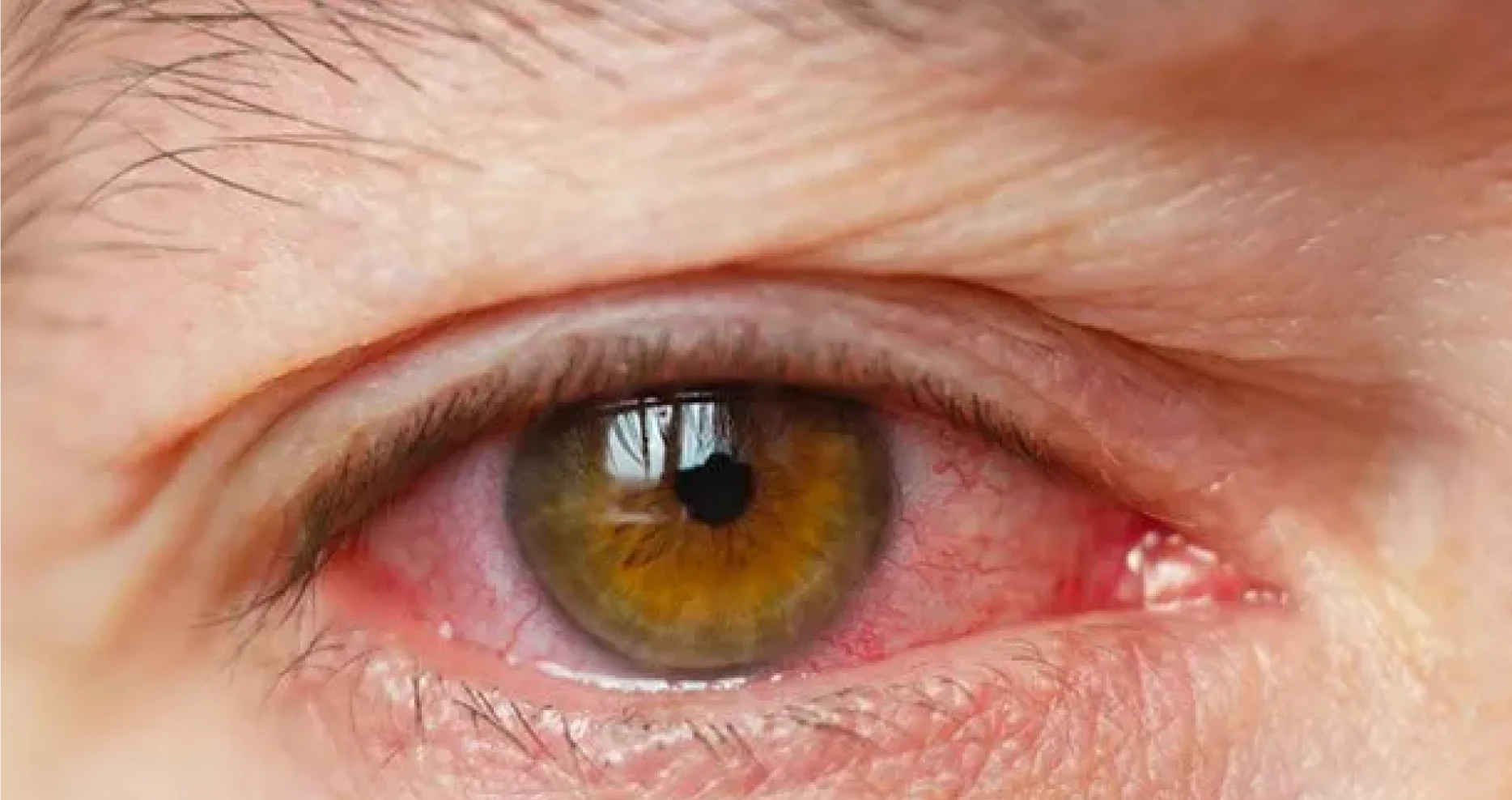
Causes of Dry Eyes
Dry eye disease can be triggered by a variety of factors, including:
1. Aging and hormonal changes
2. Prolonged screen use
3. Contact lens wear
4. Certain medications (antihistamines, antidepressants, etc.)
5. Environmental conditions (wind, smoke, dry air)
6. Underlying health conditions such as blepharitis or meibomian gland dysfunction (MGD)
Types of Dry Eye
- Evaporative Dry Eye
Caused by meibomian gland dysfunction (MGD), where the oil layer of your tears is insufficient, leading to rapid tear evaporation.
- Aqueous Deficient Dry Eye
When your eyes don’t produce enough tear volume to keep them lubricated.
- Mixed Dry Eye
A combination of both evaporative and aqueous-deficient types, which is very common.
Advanced Dry Eye Treatments at Vision Gallery
At Vision Gallery, we offer a full suite of advanced therapies to address the underlying causes of dry eye disease. Each treatment is carefully selected based on your specific needs and diagnostic results.
1. OptiLight IPL Therapy
What it is
OptiLight is an FDA-approved Intense Pulsed Light (IPL) treatment specifically designed for dry eye caused by meibomian gland dysfunction (MGD).
How it works
Gentle pulses of light are applied to the skin around the eyes. The light targets abnormal blood vessels and inflammation that contribute to poor gland function. This helps restore healthy oil flow to the tear film.
Benefits:
- Reduces inflammation around the eyelids
- Improves meibomian gland function
- Provides long-term relief from dryness and irritation
- Safe, non-invasive, and painless procedure
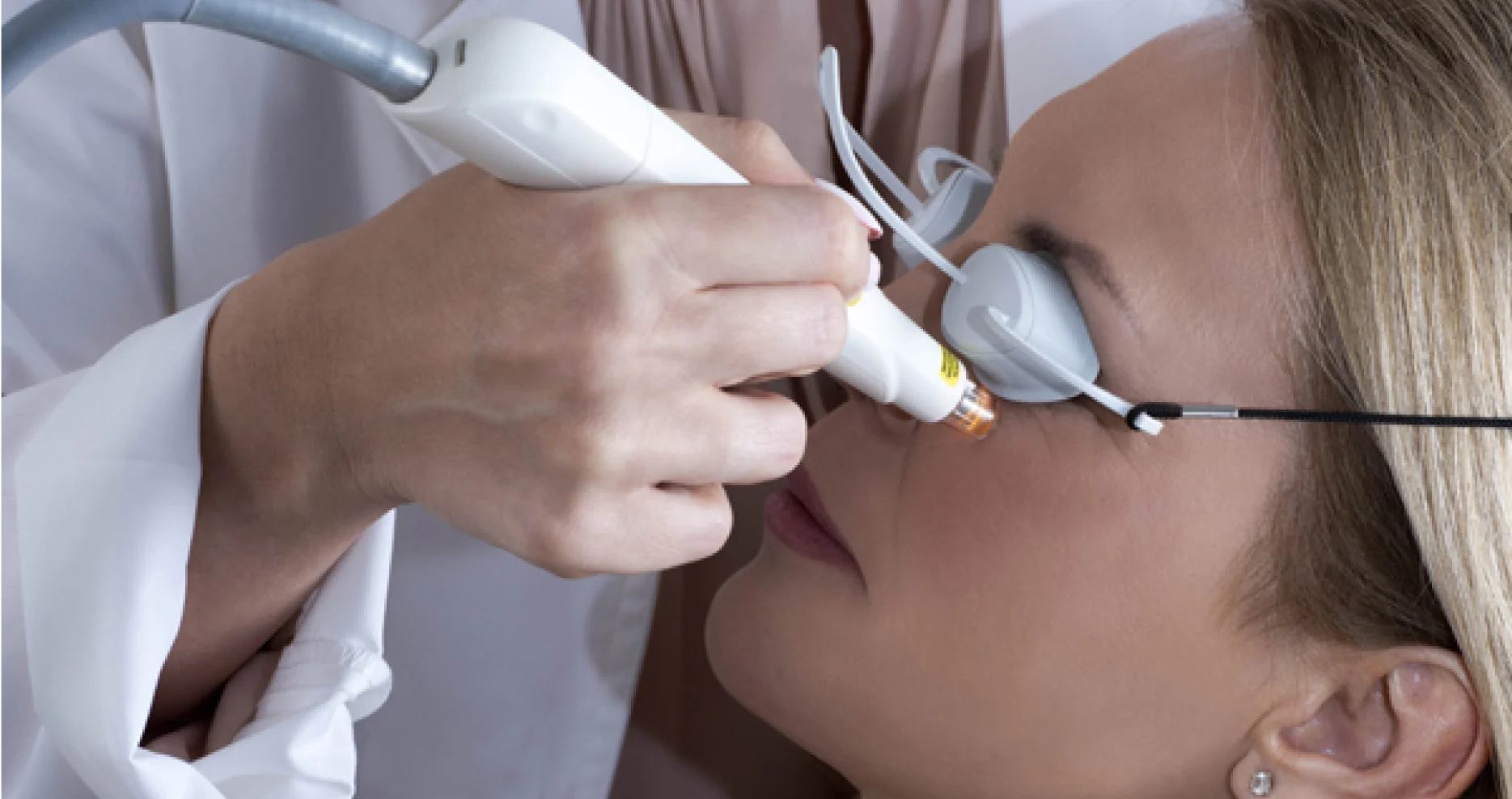
2. OptiLift DMST (Dynamic Meibomian Stimulation Therapy)
What it is
OptiLift DMST is a revolutionary treatment that stimulates the meibomian glands to restore natural tear stability.
How it works
The technology uses precise energy delivery and massage to unclog and activate blocked glands. This restores the lipid layer of the tears, preventing evaporation.
Benefits:
- Restores natural tear film balance
- Promotes healthy oil secretion from the glands
- Offers rapid relief from irritation and fluctuating vision
- Non-invasive, quick, and comfortable therapy
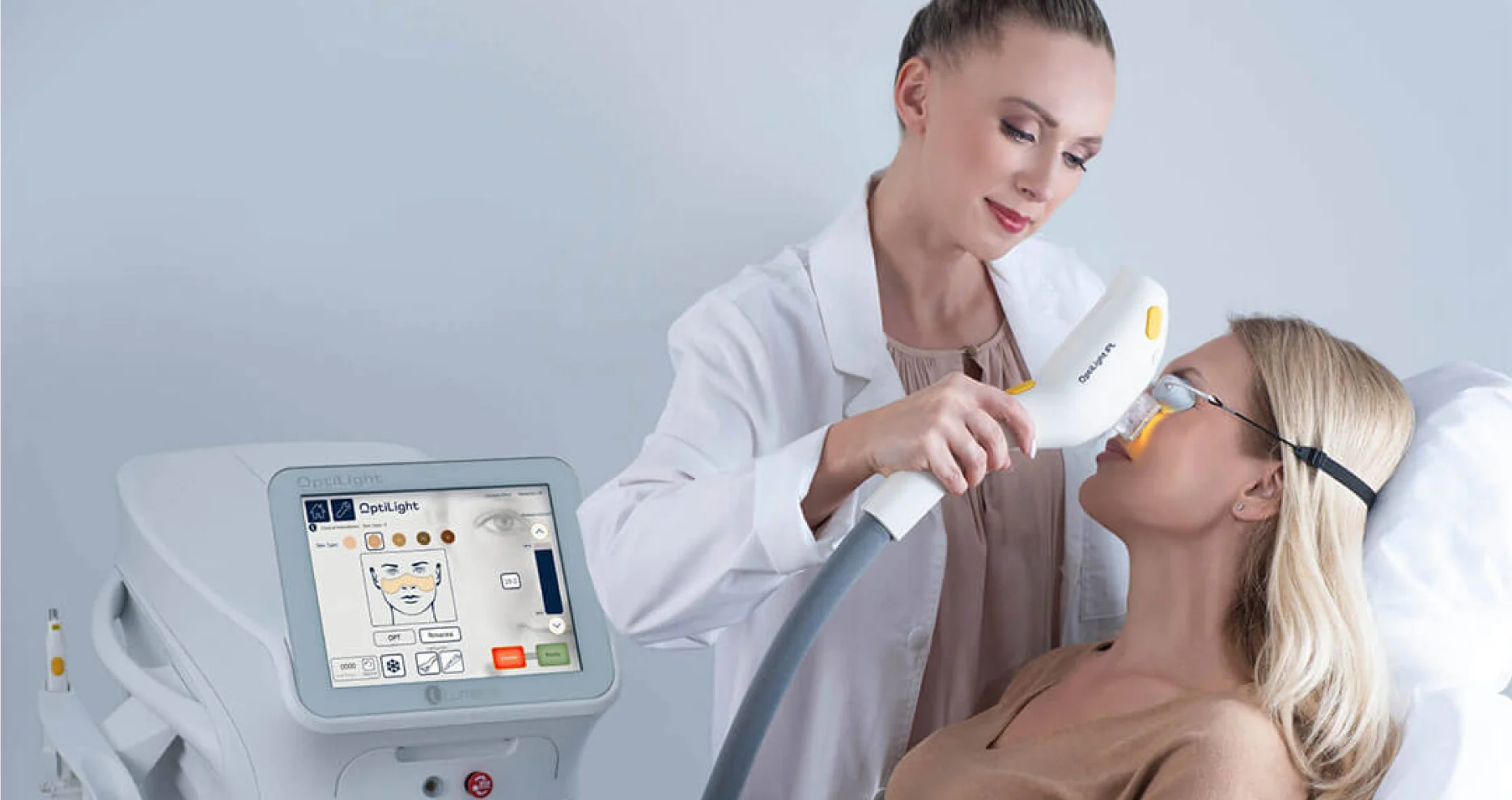
3. Radiofrequency (RF) Treatments
What it is
RF therapy is a gentle heat-based treatment used to improve eyelid health and meibomian gland function.
How it works
Controlled radiofrequency energy warms the eyelid tissue, liquefying hardened oils and unclogging blocked glands. The heat also stimulates collagen production, tightening the skin around the eyes.
Benefits:
- Clears blocked meibomian glands
- Restores healthy oil flow for more stable tears
- Improves eyelid elasticity and reduces fine lines (aesthetic benefit)
- Comfortable, relaxing, spa-like treatment
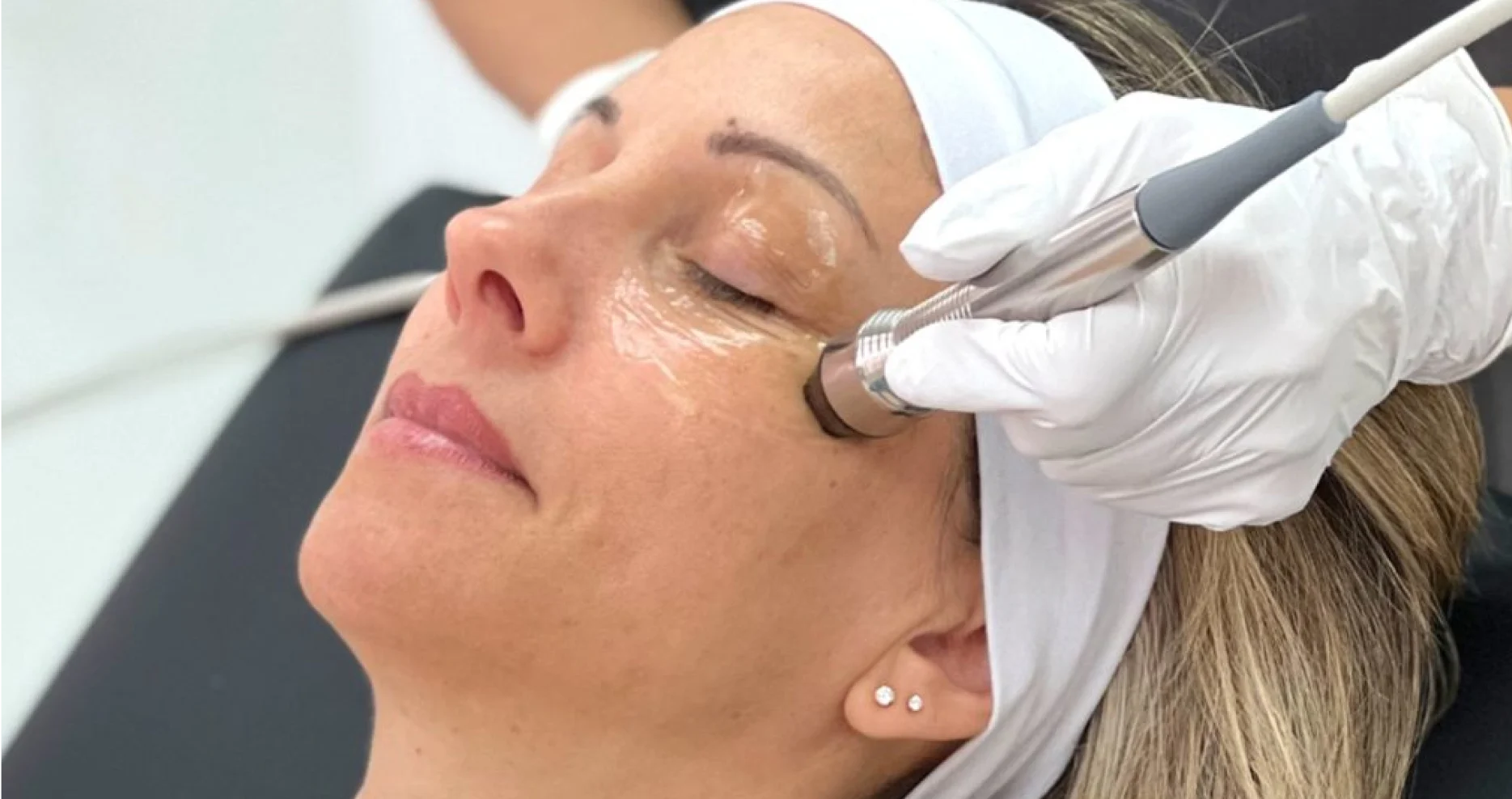
4. Microblepharoexfoliation (MBE) with Zest
What it is
MBE with Zest is a professional eyelid cleaning system that removes harmful debris, bacteria, and biofilm from the eyelid margins.
How it works
A specialized handheld device gently exfoliates the eyelid surface, removing buildup that contributes to inflammation and poor tear quality.
Benefits:
- Deep cleans eyelids and lashes
- Reduces symptoms of blepharitis and eye irritation
- Improves tear stability and overall eye comfort
- Enhances the effectiveness of other dry eye treatments
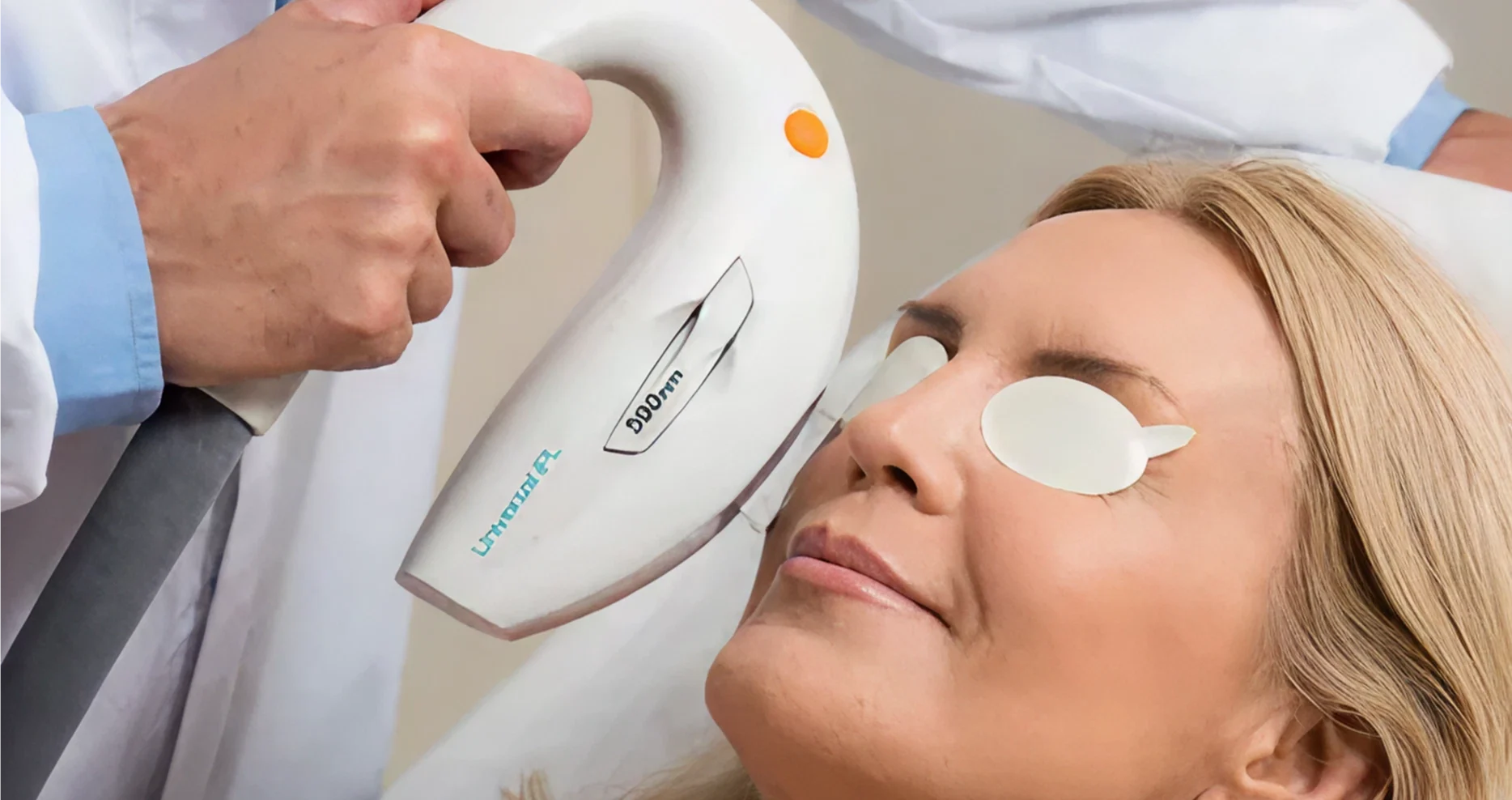
Why Early Treatment Matters
Our dry eye specialists in Katy believe that ignoring dry eye syndrome can result in worsening irritation, corneal surface damage, or a higher infection risk. Early intervention helps preserve clear, comfortable vision and prevents chronic complications that may affect your quality of life.
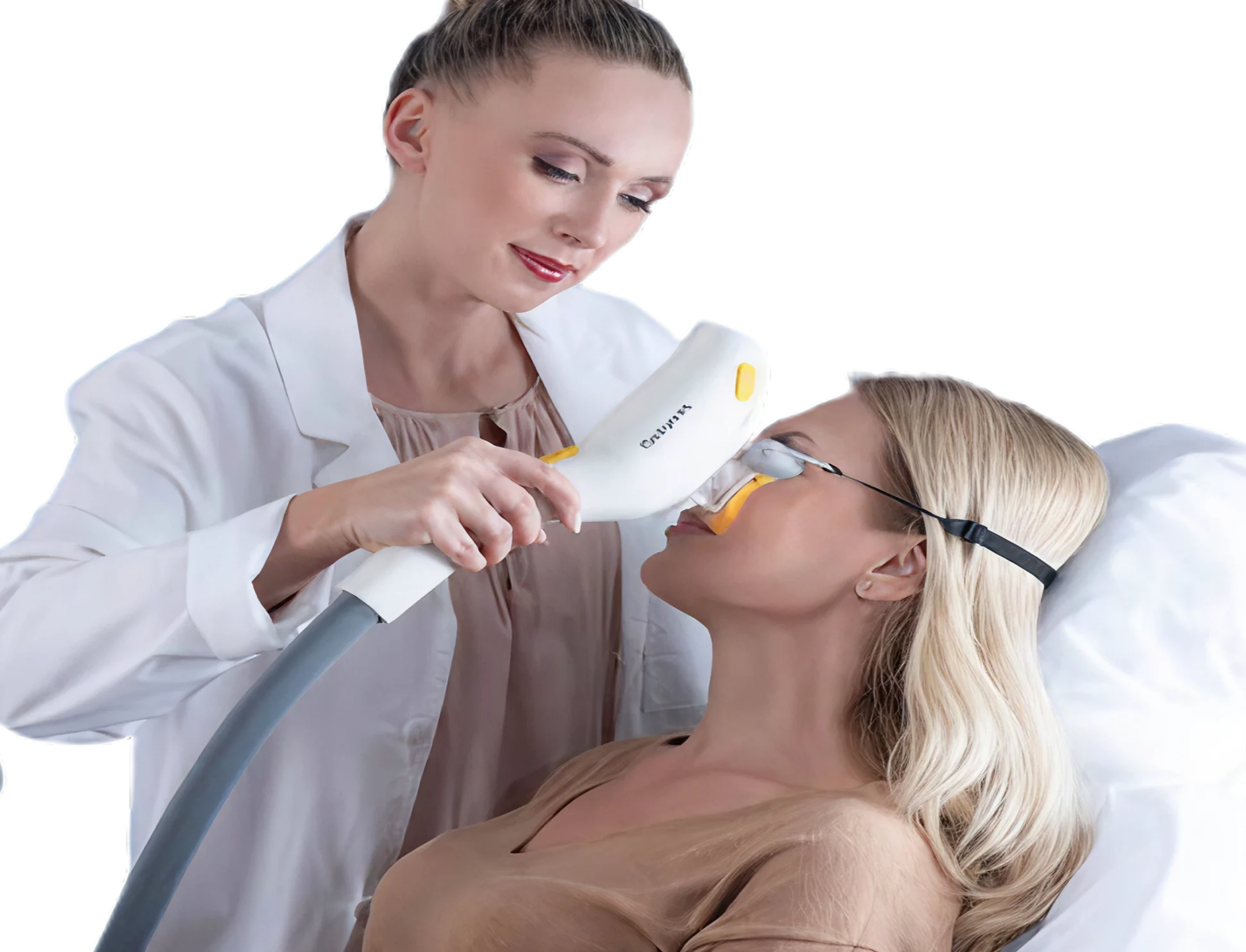
Why Choose Vision Gallery for Dry Eye Treatment in Katy, TX?
Patients choose Vision Gallery in Katy, TX, for expert, personalized dry eye care because we provide:
Specialized Expertise
Experienced dry eye specialists with advanced training
Personalized Care
Custom treatment plans based on your triggers and lifestyle
Advanced Diagnostics
State-of-the-art tests for accurate results
Ongoing Support
Long-term management for chronic conditions
Insurance-Friendly Options
We accept many medical and vision insurance plans
Why Choose Us
Contact Us
Schedule a Dry Eyes Consultation in Katy, TX
Don’t let dry eyes interfere with your daily comfort or productivity. Schedule your appointment with our dry eye specialists at Vision Gallery today and start your path toward healthier, clearer, and more comfortable vision.
Testimonials
What Our Client Say
About Vision Gallery
Trustindex verifies that the original source of the review is Google. I suffered so much from dry eye in the mornings that I felt like I woke up in the Sahara. I tried drops that would only work for a little while and was super inconvenient. Dr Ma recommended the OptiLight and OptiLift system for the problem. I have been doing these treatments for at least two months. My results have been amazing so far. My eyelids have lifted my face looks refreshed and I have very little to no symptoms of dry eye! These procedure has very few rules after and the results are life changing to me. It’s worth all the time and money.Posted onTrustindex verifies that the original source of the review is Google. Vision Gallery is fantastic! Everyone is very helpful and the dry eye treatments have been very beneficial for my dry eyes.Posted onTrustindex verifies that the original source of the review is Google. I have been a patient here for a long time. I have very severe issues with dry eye and undergone treatment. Dr. Mahmoodpour (Dr. Mah) and her team have been amazing. The office is clean, efficient, and the medical care is the best I’ve ever seen in the industry. Their small like environment, the vast majority of insurance they accept, and the attention to customer service and quality experience is wonderful. I cannot recommend them enough!Posted onTrustindex verifies that the original source of the review is Google. Dr Ma is the best optometrist that I have ever seen and I have seen many. She is compassionate and caring always thorough. She goes above and beyond and has showed our family that she is on top of anything she sees that is out of the ordinary during an exam. Her office staff is very kind and helpful as well. Don’t waste your time looking for an optometrist. Take it from me; go see Dr Ma ,she is the best!!Posted onTrustindex verifies that the original source of the review is Google. The level of care and communication is great. Went in for dry eyes and pain and the doctor took every step to determine the problem.Posted onTrustindex verifies that the original source of the review is Google. Christine is wonderful!! Business as a whole very professional and you can tell they value your time.Posted onTrustindex verifies that the original source of the review is Google. Christine was so helpful customer service was 10 out of 10!Posted onTrustindex verifies that the original source of the review is Google. I’ve been coming to Dr Ma about 2 years now. She is the sweetest, most thorough eye dr I have ever been to. She takes the time needed to explain and make sure I understand everything pertaining to my plan of treatment. All of the other eye doctors I had been to gave me the test, gave me my prescription, sold me the glasses and I was out the door. After coming to Dr. Ma. I realized I had never actually had a proper eye exam. My eyes were feeling tired and strained. She did my exam and I indeed needed a new script. I was also tested for dry eye which she showed me on the screen and explained in great detail what was going on with my eyes and what the plan of treatment was going to be. After being treated for dry eye ( no, it’s not just feeling like you eyes need drops). There is a treatment therapy for this. I literally felt like I had a new pair of eyes. I can’t believe I had never been tested for that. I’ve been wearing glasses over 10 years. The staff is Exceptional. They are patient, kind, always accommodating and knowledgeable. I’m so happy I have found Dr. Ma and her staff. I will never go to another eye doctor! I walked out of there, feeling so confident that all my issues had been addressed. My eyes felt better. I love the glasses that I got and they were very patient in helping me make sure I had the right fit and everything was as it should be. If there’s anything I need or I have a question they are always available, ready to answer and assist. They definitely care about their patients and always go above and beyond to help anyway they can. I am definitely impressed and will not go anywhere else!Verified by TrustindexTrustindex verified badge is the Universal Symbol of Trust. Only the greatest companies can get the verified badge who has a review score above 4.5, based on customer reviews over the past 12 months. Read more